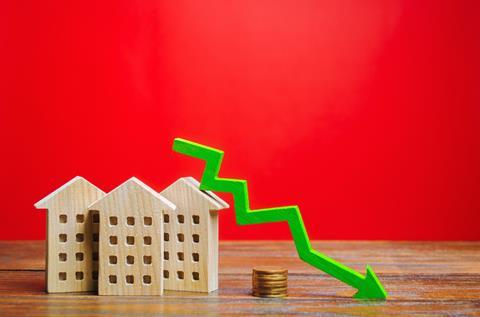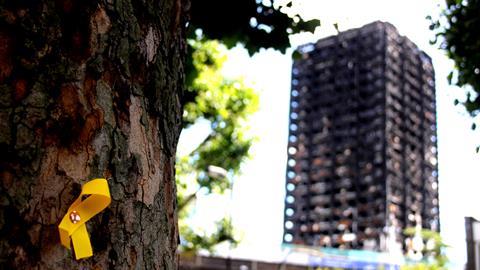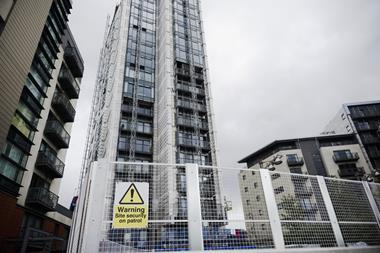How can you put a price on Grenfell? The insurance industry has been left to shoulder the risk of the heightened safety precautions which resulted from the inquiry, despite building safety and standards further deteriorating. With high-rise buildings still needing to be insured, leaseholders are now facing sky-high premiums to accommodate this risk, but who is to blame?
The insurance industry has been left to shoulder the increased risk for the failure of building safety and standards, which the Grenfell Tower fire in June 2017 shone a spotlight on.
Matt Hodges-Long chief executive at TrackMyRisks and founder of not-for-profit the Building Safety Register is now calling for a more joined up approach to the matter.
”Insurance specifically for blocks of flats is failing and professional indemnity insurance for certified professionals linked to safety is failing,” he said. “The result – an increasing number of buildings are now either uninsured, significantly under-insured or paying unsustainable premiums.
“The biggest challenge overall is who pays to put it right? The new legislation puts the responsibility to pay onto leaseholders.”
Hodges-Long is now arguing for a more mature conversation on how this charge should be funded, deeming the charge ”an assault on leaseholders”.
“If a building can prove it is not as bad as the underwriters might think, then there is more accuracy in the pricing – at the moment I think they find it difficult to explain themselves from a risk perspective,” he said.
TrackMyRisks has been working with landlords and housing associations to identify and organise high risk assets. Last week the Building Safety Register launched a survey in a bid to gather feedback on the draft BSB (2020).
24 Hours after publication of the draft #BuildingSafety Act 2020. Tell us your thoughts, vote, RT: @brumlag @NLC_2019 @ukcag @SteveMcfirerisk @LKPleasehold
— Building Safety Register (@BldgSafetyReg) July 21, 2020
Fall guys
The likely impact on leaseholders is that they will become the fall guy or scapegoat.
”Even though contractually it is the leaseholders responsibility within the lease, but that does not make the charges fair or equitable,” Hodges-Long said.
Roger Flaxman, principal consultant and chairman at Flaxman Partners, told Insurance Times: “The Grenfell fire inquiry exposed the substantial weaknesses in the built environment – these are the standards of buildings, poor construction, inspection and supervision. The risk of these weaknesses has been insidiously transferred from the construction sector to the insurance industry. It is a question of when Grenfell will happen again, not if.”
Flaxman deems the issue a “circular problem” as tackling it could frustrate the entire built environment.
This could also frustrate leasing.
“The problem is the liabilities have increased over the years,” he said, adding that this was because business is being competed for and therefore ”onerous terms and conditions” have had to be accepted for this to happen.
”This exposed the weaknesses to a level that the underwriters cannot turn a blind eye,” he continued. ”Insurers are now saying that the risk is too great for any amount of money.”
Both Flaxman and Hodges-Long agree that leaseholders have been wrongly lumbered with the safety costs.
But Flaxman argues that this is an opportunity for the insurance industry to stand up for themselves, refuse to insure bad practices and say to the government, ”unless you sort this out, we will not stand behind you”.
”This isn’t a matter the insurance industry is responsible for, I do not think insurers have failed the professionals,” Flaxman added. ”They have been very tolerant for a long time but cannot be expected to go on unless the risk is drastically improved.”
Hodges-Long added that this insurance issue could also invalidate mortgages as insurance is compulsory when buying a property.
What’s Ren Re got to do with it?
Flaxman was involved in the setup of Renaissance Re (Ren Re) – this was the result of some larger architect firms joining forces to launch a mutual. He has over thirty-five years dealing with property liability claims.
In the 1980’s he witnessed the market collapsing as there were some very high-risk new developments in this area. This caused the fall of bridges, dams, and swimming pools. The insurance market, which was quite small at the time, started to put the price up for architects, so much so that it put half of them out of business. As a result, the larger architect firms set up a mutual – Ren Re.
Although he traced the original problem back to the second world war and the construction industry cutting corners with building materials and standards.
Ren Re was founded in 1993 in Bermuda, but has offices worldwide. It is a catastrophe, casualty and specialty reinsurer.
Why is there a broker shortage?
There is also a shortage of professional indemnity insurance in construction. This is because there are only two brokers left that insure approved inspectors – Howden Insurance Brokers, and Griffiths & Armour. Some approved inspectors have been forced to fold as they cannot get the insurance they need to operate.
If an inspector refuses to sign off a contract knowing that it is not ideal, he could lose his job. On the flip side of this, if he does sign it off, he could still lose his job through being sued.
Paralysis
“One of the problems is there is a conflation between a life safety view of building safety and a property protection view, and that has caused some problems in terms of the safety measures that have been implemented to preserve life which then get replaced with technology,” Hodges-Long added.
Speaking about the EWS1 form that lending banks use, Hodges-Long said that if this does not get signed off as the building is not compliant with the measures, then effectively it would render the flat impossible to sell. This is causing a paralysis with people trying to buy and sell apartments.
A leaseholder paying a service charge of £200 a year when they first buy a leasehold property, in ten years could see this jumping to £20,000 or £30,000 a year which they could struggle to pay.
One such leaseholder is Val Peets, who lives in a six-storey high-rise two bedroom flat in Manchester. She has been forced to re-mortgage her flat to meet the increased cost of her service charge, which includes the buildings’ insurance cost, and being close to retirement she is now worried about how she might survive.
Cladding conundrum
Flaxman said that what came to light in the Grenfell inquiry was that any cladding is flammable at a high enough temperature. It is like putting a jacket around a building that keeps the fire in and intensifies the heat.
”Even if cladding is in itself inflammable, it creates a flue [draft] effect that interferes with reasonable fire precautions, safety and prevention, is it justified at any cost?,” he said. And he cited the tendering process that the construction industry is based on, as a ”primary culprit”.
“Insurers should not be expected to underwrite the weaknesses and bad practices of the construction industry,” he added. ”Until the government does something really serious about it, where there is a real, painful penalty on individuals responsible for cutting corners and leaving a legacy of unsafe buildings, the insurance industry should make a stand for the best interests of society and refuse to insure bad practices.”
That responsibility, Flaxman continued, ”can only sit squarely with government-led regulations; and enforcement of them. That topic has been in the ’too difficult’ tray for far too long”.
“One cannot tackle the current insurance problem by ‘insurance methods’, you can only tackle it by changing the root cause of the risk,” Flaxman said.
Read more…TrackMyRisks Matt Hodges-Long on solving the buildings insurance crisis
Not subscribed? Become a subscriber and access our premium content

Hosted by comedian and actor Tom Allen, 34 Gold, 23 Silver and 22 Bronze awards were handed out across an amazing 34 categories recognising brilliance and innovation right across the breadth of UK general insurance.





















































No comments yet